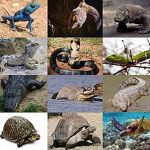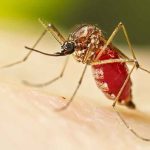
Reptiles, our four-legged and cold-blooded friends are the most fascinating gift of nature that have walked the earth for around 400 million years. Reptile Awareness Day is observed on October 21st . This day encourages people to learn about the incredible world of reptiles, appreciate their importance and support conservation efforts to protect their habitat and population. Reptiles, which include snakes, turtles, lizards and crocodiles are unique creatures that play a vital role in our ecosystem.
Reptiles, in tetrapod are one of the most diverse classes of organisms on this planet. They serve an important role in the ecosystem of whatever biome they’re a part of and without reptiles, we can’t bring a healthy environment. They can thrive in habitats such as deserts, forest, oceans and ponds, but one commonality between them all is that the climate must be warm. Reptiles are ectotherms and they cannot regulate their own body temperature like we do. Their temperatures and metabolic processes are entirely reliant on external temperatures. This is why you commonly see reptiles catching some rays as they bask in the sunlight.
Reptiles play an important role in balancing the ecosystem. They’re the ones that make sure there are enough resources for all the animals living within their habitat by preventing overpopulation and providing food for predators. For example, snakes and lizards are considered ‘friends of farmers’ as they control the population of rodents, small mammals, insects etc. In the wetlands, crocodiles keep the fish population at bay so that other forms of aquatic life can thrive and the ecosystem remains healthy. Many of them also help get rid of dead animals, which helps to keep the environment clean and prevent the harmful diseases.
Reptiles are one of the more underappreciated animals on this planet, but more we learn, we will understand how fascinating these creatures really are! They’ve been around for hundreds of millions of years and there are currently about 10,700 extant species. It is important to understand that every reptile has its specified role in nature and protecting them should be a concern to us.
According to Zoological Survey of India, the country supports planet’s 6.2% of all reptilian. There are 518 species of reptiles in the country. They include 3 species of crocodiles, 34 species of turtles and tortoises, 202 species of lizards and 279 species of snakes belonging to 28 families. Of the 518 species of reptiles found in India, nearly192 species are endemic to India. Out of these, 26 species have been listed as Threatened in the IUCN Red List.
Since several Indian reptile species and their parts are being traded internationally, many of them are included in CITES appendices. There are 19 species of reptiles included in Appendix –I, 30 species in Appendix-II and 4 species in Appendix-III.
Manipur which occupies only 0.7% of geographical area but supports 10.80 % of fauna and 17.24% of amphibians and reptiles in the country. The recorded reptiles of the state are 74 species in which 25 lizards, 1 gharial, 10 tortoises and turtles and 38 snakes.
Reptiles are terrestrial organisms that like to live in woodlands, grasslands, wetlands and shrubs. In the wild state they live in highly complex environments of dynamic spectra and lux of light, temperature and wavelength, on a daily and seasonal basis; changeable patterns of micro-climates and humidity; seasonally-diverse diets as differing prey items become available at different times of the year; in short, textural environments of intricate convolution and complexity.
Reptiles are mainly exploited and traded for their meat, skin, eggs, flesh and shell. Exponential increase in human population, urbanization, habitat destruction, poor agricultural methods and pesticides and indiscriminate hunting are the factors leading to decline in reptile population. The reptiles like any other animals have definite role in maintaining the food chain.
All reptiles breathe using their lungs. Reptiles do not have sweat glands. Vipers, anaconda and rattlesnakes don’t lay eggs but instead, give birth to live young. Reptiles are the longest-lived animals on the planet. Reptiles can be found on every continent except for Antarctica. In some reptiles, temperature in hatching decides the male and female. Most reptiles are carnivores. There are 500 species of venomous snakes but only about 40 of them are harmful to humans.
Wildlife conservation depends on the understanding and value of local people, authorities and the governments. We also need to have a deeper bond between the environment and mankind. Therefore with coming of the National Reptile Awareness Day- 2023, let’s save the reptiles for the future generation.
N. Munal Meitei
Environmentalist, email- nmunall@yahoo.in













Well written by the author